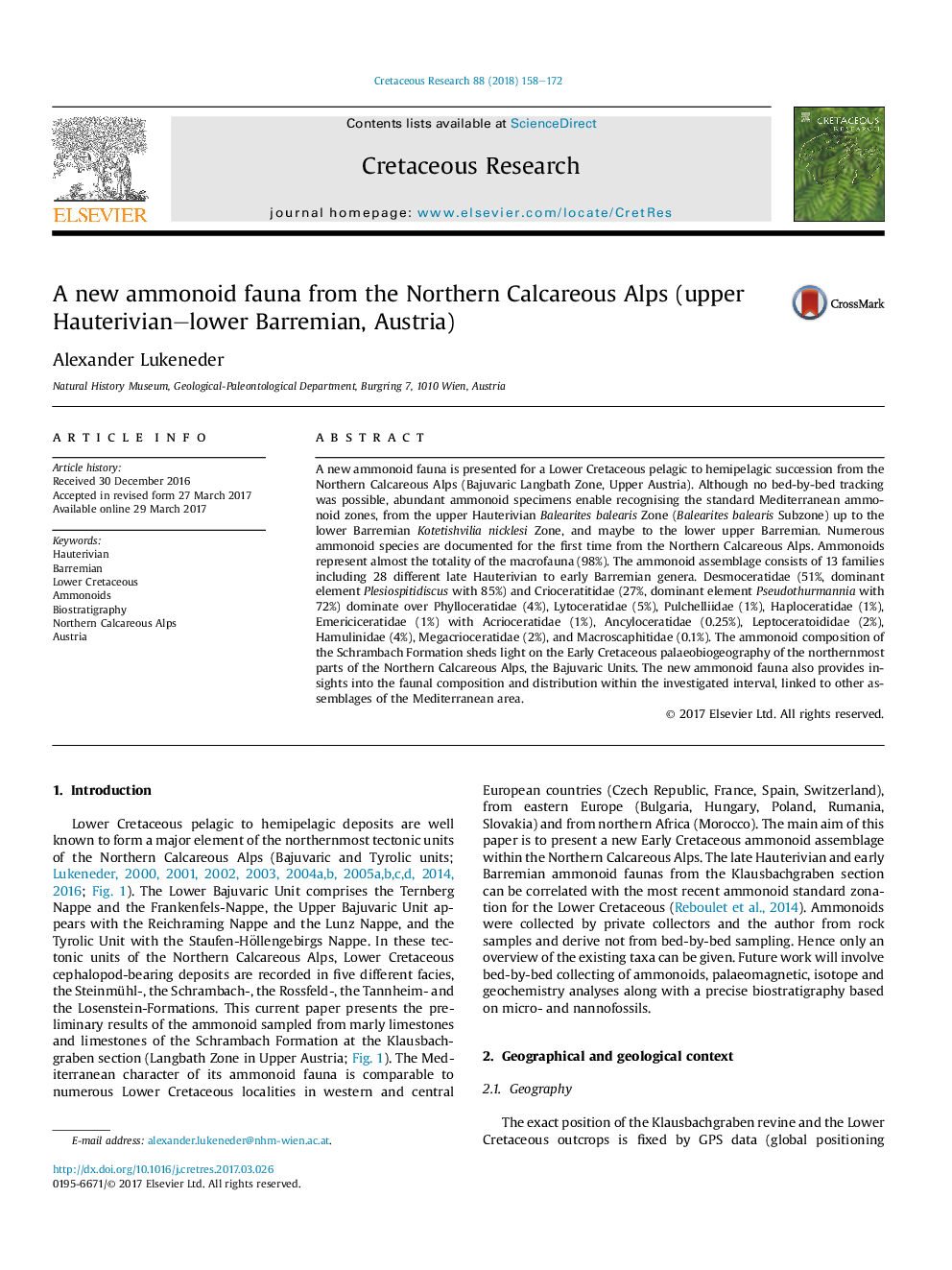| Article ID | Journal | Published Year | Pages | File Type |
|---|---|---|---|---|
| 8916263 | Cretaceous Research | 2018 | 15 Pages |
Abstract
A new ammonoid fauna is presented for a Lower Cretaceous pelagic to hemipelagic succession from the Northern Calcareous Alps (Bajuvaric Langbath Zone, Upper Austria). Although no bed-by-bed tracking was possible, abundant ammonoid specimens enable recognising the standard Mediterranean ammonoid zones, from the upper Hauterivian Balearites balearis Zone (Balearites balearis Subzone) up to the lower Barremian Kotetishvilia nicklesi Zone, and maybe to the lower upper Barremian. Numerous ammonoid species are documented for the first time from the Northern Calcareous Alps. Ammonoids represent almost the totality of the macrofauna (98%). The ammonoid assemblage consists of 13 families including 28 different late Hauterivian to early Barremian genera. Desmoceratidae (51%, dominant element Plesiospitidiscus with 85%) and Crioceratitidae (27%, dominant element Pseudothurmannia with 72%) dominate over Phylloceratidae (4%), Lytoceratidae (5%), Pulchelliidae (1%), Haploceratidae (1%), Emericiceratidae (1%) with Acrioceratidae (1%), Ancyloceratidae (0.25%), Leptoceratoididae (2%), Hamulinidae (4%), Megacrioceratidae (2%), and Macroscaphitidae (0.1%). The ammonoid composition of the Schrambach Formation sheds light on the Early Cretaceous palaeobiogeography of the northernmost parts of the Northern Calcareous Alps, the Bajuvaric Units. The new ammonoid fauna also provides insights into the faunal composition and distribution within the investigated interval, linked to other assemblages of the Mediterranean area.
Keywords
Related Topics
Physical Sciences and Engineering
Earth and Planetary Sciences
Palaeontology
Authors
Alexander Lukeneder,
